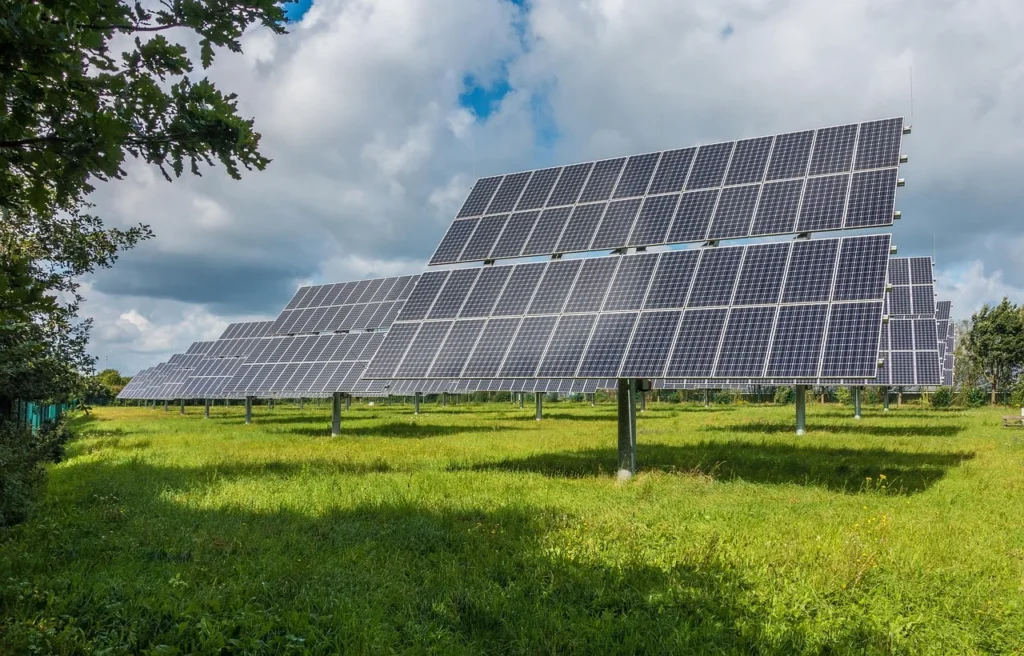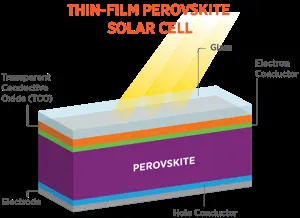New Solutions for Renewable Energy and Climate Change
Rapid technological innovation and global collaboration are driving exciting new solutions for renewable energy and climate change in 2025. These advancements promise to accelerate the transition to a cleaner, more sustainable future by addressing the greatest challenges of energy production, distribution, and storage.
The Latest in Renewable Energy Innovation

In 2025, renewable sources are expected to surpass coal as the world’s leading electricity provider—an unprecedented shift toward decarbonization. Key breakthroughs are making this transition possible:
- Perovskite Solar Cells: These new solar materials now achieve over 25% efficiency (and more than 30% in tandem with silicon), potentially outpacing traditional panels. Lightweight and flexible, they are being integrated into glass, rooftops, and portable devices.
- Green Hydrogen: Produced using renewable energy, green hydrogen offers a clean alternative for heavy industries and long-distance transport that cannot be easily electrified. The sector has seen massive investment, with electrolyzer capacity doubling and China leading the world in production infrastructure.
- Advanced Wind Turbines: Innovations such as floating offshore turbines, larger blades, and vertical axis designs enable power generation even in challenging environments and at lower wind speeds. Using wood for towers helps cut emissions and costs.
List of Renewable Energy Solutions
1. Solar Power: Harnessing the Sun for Clean Energy
Solar power remains one of the most accessible and scalable renewable energy solutions. Using photovoltaic (PV) panels and concentrated solar systems, sunlight is directly converted into electricity without generating greenhouse gases. Recent innovations such as perovskite solar cells, solar windows, and solar rooftops have dramatically improved efficiency and lowered costs. Solar energy’s flexibility—ranging from large-scale solar farms to residential installations—makes it a cornerstone of the global transition to clean energy.
2. Wind Energy: Powering a Sustainable Future
Wind energy harnesses the kinetic power of moving air through turbines to generate electricity. Both onshore and offshore wind farms are expanding rapidly, supported by new technologies like floating platforms and aerodynamic blade designs that capture more energy even in low-wind conditions. Wind power produces no emissions during operation and significantly reduces reliance on fossil fuels, making it a vital component of renewable energy strategies worldwide.
3. Hydropower: The Flow of Renewable Electricity
Hydropower uses the natural movement of water—rivers, tides, and waterfalls—to generate clean electricity. Modern hydropower systems are being redesigned to minimize ecological impact while providing reliable, large-scale energy generation. Micro-hydropower installations are now powering remote communities, proving that hydropower remains one of the most efficient and adaptable renewable sources.
4. Geothermal Energy: Earth’s Hidden Heat Source
Geothermal energy extracts thermal energy from beneath the Earth’s surface for heating and electricity generation. It offers a steady, 24/7 supply of renewable energy that is unaffected by weather conditions. Advanced drilling techniques and closed-loop systems have improved efficiency, making geothermal one of the most reliable and sustainable energy solutions for the future.
5. Green Hydrogen: Fuel for a Decarbonized World
Produced through electrolysis powered by renewable electricity, green hydrogen provides a zero-emission alternative for sectors that are difficult to electrify—such as steelmaking, aviation, and shipping. It can be stored, transported, and converted into electricity when needed, helping stabilize power grids and reduce industrial emissions. As investment grows, green hydrogen is emerging as a game-changer in global energy systems.
6. Bioenergy and Waste-to-Energy Systems
Bioenergy converts organic materials like crop residues, forestry waste, and municipal waste into electricity, heat, or biofuels. When combined with carbon capture technologies (BECCS), bioenergy can even achieve net-negative emissions. These systems not only produce clean energy but also reduce waste, supporting a circular economy that aligns with global sustainability goals.
Climate Change Mitigation Measures
1. Energy Efficiency and Smart Technologies
Improving energy efficiency is one of the fastest and most cost-effective ways to cut emissions. Smart appliances, AI-driven energy management systems, and digital twins optimize electricity use across industries and households. These innovations reduce waste, lower costs, and make renewable integration smoother across the energy grid.
2. Carbon Capture, Utilization, and Storage (CCUS)
CCUS technology captures carbon dioxide from industrial sources or directly from the air, preventing it from entering the atmosphere. The captured carbon can then be reused in manufacturing processes or safely stored underground. As industries pursue net-zero targets, CCUS is becoming essential for offsetting unavoidable emissions in heavy sectors like cement and steel.
3. Sustainable Transportation and Electrification
Transitioning to electric vehicles (EVs) powered by renewable energy drastically reduces transportation-related emissions. Complementary measures like expanding EV charging infrastructure and developing sustainable aviation fuels (SAF) support a low-carbon mobility ecosystem. Electrification also extends to public transport and shipping, reducing fossil fuel dependency across all modes of travel.
4. Reforestation and Nature-Based Solutions
Restoring forests, wetlands, and grasslands enhances natural carbon sequestration. These nature-based solutions not only absorb CO₂ but also strengthen biodiversity, reduce flooding, and improve soil health. Combined with renewable energy expansion, they form a powerful dual strategy against climate change.
5. Policy and Global Collaboration
Strong policies and international cooperation are crucial to accelerating renewable energy deployment. Governments can implement carbon pricing, tax incentives, and green subsidies to make clean technologies more competitive. Collaborative initiatives like the Paris Agreement and renewable energy investment funds ensure that all nations can access sustainable solutions and share technological advancements.
6. Circular Economy and Sustainable Manufacturing
A circular economy approach minimizes waste and maximizes resource use through recycling, repurposing, and eco-friendly production. In renewable industries, manufacturers are designing solar panels, batteries, and turbines with recyclable components. This shift toward sustainable manufacturing reduces lifecycle emissions and supports a long-term, climate-resilient economy.
Smart Energy Management and Storage
Integrating intermittent renewables like wind and solar into existing grids has been a challenge, but smart solutions are changing the landscape:
- AI & Digital Twins: Artificial intelligence predicts supply and demand, balancing the grid in real time. Digital twins (virtual replicas of energy assets) help simulate and optimize operations, boosting efficiency and reliability.
- Smart Grids: Next-generation grids use real-time analytics to optimize energy use, accommodate fluctuating renewable inputs, and quickly address disruptions. Smart inverters make maintenance easier and enhance grid resilience, crucial as renewables grow.
- Thermal Storage (Sand Batteries): Storing excess renewable energy as heat in fluidized beds of silica sand allows highly efficient, low-loss energy retrieval. This method can help industries and regions rely less on fossil fuels by ensuring stable energy availability.
How Renewable Energy Reduces Carbon Emissions
Renewable energy reduces carbon emissions primarily by replacing fossil fuel-based energy sources with clean, emission-free power generation methods such as wind, solar, hydro, and geothermal energy. These renewables emit little to no greenhouse gases during operation, dramatically lowering the release of carbon dioxide (CO₂) — the main driver of climate change.
Clean, Emission-Free Energy Production
Unlike coal, oil, and natural gas plants that burn fuel and release CO₂, renewable energy systems convert natural forces like sunlight, wind, and water flow into electricity without combustion. This direct avoidance of fossil fuel burning eliminates significant CO₂ and methane emissions from the energy sector, which is responsible for the bulk of global greenhouse gases.
Decarbonization of Key Sectors
Renewables enable the decarbonization of major sectors — electricity, transportation, and industry — by replacing carbon-intensive energy sources with clean power. For example, electric vehicles powered by renewable energy operate with near-zero emissions, and industrial heating can shift from fossil fuels to electrical systems powered by solar or wind energy.
Lifecycle Emissions Are Minimal
While manufacturing solar panels and wind turbines involves initial emissions, the clean energy they generate over their operational lifetime far outweighs these upfront costs. Over time, renewables offset their production emissions many times over, making their total carbon footprint significantly smaller than fossil-based systems.
Efficiency and Energy Storage
Advancements in storage technologies, such as lithium-ion and flow batteries, allow the storage of excess renewable energy and reduce dependency on fossil-fuel backup systems. This ensures consistent power supply and prevents indirect emissions associated with standby thermal generation.
Quantified Impact
Empirical studies show a strong negative correlation between renewable energy production and carbon emissions. In a global analysis of 130 countries, researchers found that a 10% increase in renewable energy use reduces per capita carbon emissions by approximately 1.6%, illustrating its measurable environmental benefits.
In essence, renewable energy systems replace carbon-intensive generation, improve efficiency, and enable sustainable electrification of other sectors — collectively forming one of the strongest tools for achieving net-zero emissions and combating climate change.
Addressing Climate Change Beyond Power Generation
Renewables benefit not just the power sector but the wider battle against climate change:
- Carbon Capture and Utilization: New large-scale projects pull CO₂ from the air and convert it into synthetic fuels, materials, or store it underground, making progress on hard-to-abate emissions.
- Building Innovations: Phase-change insulation materials in construction improve energy efficiency, lowering heating and cooling emissions throughout a building’s life cycle.
Key Renewable Technologies Driving Carbon Footprint Reduction
Key renewable technologies driving carbon footprint reduction include solar photovoltaic (PV) panels, wind turbines, hydropower, geothermal energy, bioenergy (including bioenergy with carbon capture and storage), and green hydrogen production. Each of these technologies plays a unique role in decarbonizing energy and industrial systems.
Major Renewable Technologies
- Solar Photovoltaic (PV) Panels: Convert sunlight directly into electricity with no emissions during operation, increasingly common for homes and industries.
- Wind Turbines: Harvest wind energy to generate electricity, contributing substantially to grid-scale low-carbon power.
- Hydropower: Uses flowing water to turn turbines and produce clean electricity, widely applied for both large-scale and small-scale grids.
- Geothermal Energy: Extracts heat from the earth’s crust for power generation and direct heating applications.
- Bioenergy with Carbon Capture and Storage (BECCS): Converts biomass into energy while capturing carbon emissions, enabling energy production with net-negative emissions.
- Green Hydrogen: Uses renewable electricity to split water and produce hydrogen, which can replace fossil fuels in heavy industry, transport, and energy storage.
- Sustainable Aviation Fuel (SAF): Made from renewable sources and blended with traditional jet fuel to lower aviation’s carbon footprint.
Supportive Decarbonization Technologies

- Micro-Gasification and Wood Recycling: Converts biological and wood waste into energy, reducing emissions in manufacturing and power production.
- Smart Grids and Digitalization: Enhance renewable integration and energy efficiency, managing varying power flows and reducing avoidable energy demand.
These advancements are central to reaching global carbon reduction targets and enabling the transition to sustainable energy systems.
The Broader Impact of Renewable Solutions
Adopting new energy technologies yields economic, security, and health benefits:
- Energy Security: Diversifying energy sources reduces reliance on imported fossil fuels and volatile markets.
- Economic Growth: Investment in renewables drives job creation, industry growth, and technology innovation. Falling costs make renewables competitive, spurring long-term prosperity.
- Public Health: Cleaner energy reduces air and water pollution, leading to fewer health problems and lower healthcare expenses.
Green Hydrogen Supports Decarbonization in Heavy Industries
Green hydrogen supports decarbonization in heavy industries by serving as a zero-emission fuel and feedstock, replacing coal, oil, and natural gas in processes that are typically difficult to electrify or decarbonize.
Clean Replacement for Fossil Fuels
Green hydrogen is produced via water electrolysis powered by renewable energy, resulting in pure hydrogen with no direct CO₂ emissions. This clean hydrogen can be combusted for high-temperature industrial processes or used as a chemical feedstock, driving down emissions in sectors like steel, cement, chemicals, and refining.
Example Applications
- Steel production: Green hydrogen enables direct reduced iron (DRI) processes, replacing coal-based blast furnaces and cutting steel-making emissions by up to 80%.
- Cement manufacturing: Hydrogen can fuel kilns, drastically lowering combustion emissions linked to cement production.
- Chemical industry: Used as a feedstock for ammonia and methanol, green hydrogen removes fossil dependency from chemical synthesis.
- Oil refining: Hydrogen produced with renewables replaces conventional hydrogen in desulfurization and hydrocracking, cutting refinery emissions.
Additional Benefits
Beyond cutting carbon, green hydrogen can improve energy flexibility, support combined heat and power systems, and contribute to grid balancing for industrial sites charged with fluctuating renewable electricity.
By enabling deep emissions cuts in notoriously “hard-to-abate” industries, green hydrogen aligns industrial activities with net-zero goals and is essential for achieving global climate targets.
Perovskite Solar Cells Boost Renewable Energy Efficiency
Perovskite solar cells significantly boost renewable energy efficiency by offering high power conversion rates, low production costs, and versatile design capabilities. Their crystal structure enables efficient light absorption and charge-carrier mobility, allowing them to convert sunlight into electricity more effectively than many traditional materials.
Key Ways Perovskite Solar Cells Boost Efficiency
- High Power Conversion Efficiency: Perovskite solar cells have achieved laboratory efficiencies surpassing 25%, rivaling or even exceeding conventional silicon cells, despite being a much newer technology. This rapid efficiency improvement is due to their broad-spectrum light absorption and minimal energy losses during charge generation and transport.
- Broad Light Absorption: Perovskites absorb sunlight across a wide spectrum, including low-light conditions. This enables them to harvest more solar energy, even when sunlight is diffuse or indirect, raising real-world efficiency.
- Excellent Charge Carrier Mobility: These materials exhibit exceptional electron and hole mobility, which means more of the absorbed energy gets converted to usable electricity, further reducing energy losses.
- Tandem Cell Compatibility: Perovskites can be layered with silicon or other solar technologies to create tandem solar cells, capturing more energy by utilizing a broader range of light wavelengths, leading to even higher efficiencies.
- Thin, Lightweight, and Flexible Design: Their thin-film nature and flexibility allow for innovative applications—like solar windows, wearable devices, and integration into unconventional surfaces—making solar energy adoption possible in new contexts.
Cost-Effectiveness and Manufacturing

- Low Manufacturing Costs: Perovskite solar cells use inexpensive, abundant materials and can be manufactured through low-temperature, solution-based processes like printing or coating, making large-scale production more affordable and sustainable versus traditional silicon panels.
- Environmental Benefits: Lower production energy requirements and tunable material composition make perovskite-based solar manufacturing greener, supporting global climate goals.
Current Challenges
Stability and durability against heat, moisture, and long-term sunlight are active areas of research. Material engineering, encapsulation techniques, and new compositions are rapidly enhancing the reliability of perovskite solar cells for long-term use.
In summary, perovskite solar cells are revolutionizing renewable energy by enabling higher efficiency, cost-effectiveness, and broader adoption, bringing the goal of affordable, efficient green energy closer to reality.
Conclusion: Accelerating Towards a Net Zero Future
The impressive pace of innovation in renewable energy throughout 2025 is transforming the global approach to climate change. From more efficient materials to smarter grids and bold storage solutions, these advances position renewable energy as the backbone of a sustainable world. Continuing investment, smart policies, and public adoption will be vital to ensuring these solutions reach every community and meet the urgent challenge of climate change.
FAQ
What are the main solutions for climate change?
The main solutions include transitioning away from fossil fuels toward renewable energy sources like wind, solar, hydroelectric, and geothermal, improving energy efficiency, and implementing policies that support these changes.
Why is renewable energy important in addressing climate change?
Renewable energy is crucial because it produces little to no greenhouse gases compared to fossil fuels, helping reduce the emissions that drive global warming.
Which renewable energy sources are most effective?
Wind and solar energy are currently the most effective renewable sources for rapid deployment and significant emission reductions, but hydroelectric and geothermal also play major roles.
What recent technological innovations are advancing renewable energy?
Recent innovations include energy storage solutions (like advanced batteries), micro-grids for disaster resilience, and improvements in solar photovoltaic and wind turbine technology that boost efficiency and lower costs.
How can policy support renewable energy deployment?
Policies such as incentives, tax credits, subsidies, and feed-in tariffs encourage the adoption of renewables and facilitate investment in research and development, accelerating the transition from fossil fuels.
What are the barriers to switching to renewable energy?
Major barriers include existing infrastructure dependency on fossil fuels, initial investment costs, integration into current energy grids, and the need for policy alignment across sectors.
Can renewable energy power economic growth?
Yes, renewable energy not only reduces emissions, but also creates jobs and supports sustainable economic development in communities around the world.
How do nature-based solutions help with climate change?
Protecting and restoring natural ecosystems (forests, wetlands, grasslands) helps capture carbon and strengthens resilience against climate impacts, complementing energy-focused solutions.
What role do micro-grids and decentralized energy play?
Micro-grids—networks that generate and distribute renewable energy locally—are particularly useful for climate adaptation, providing resilient power during extreme weather or disasters.
Is achieving net-zero emissions by 2050 possible?
It is possible, but requires immediate, coordinated actions in all sectors, rapid deployment of renewable energy, major emission reductions, and innovation in both mitigation and adaptation strategies.